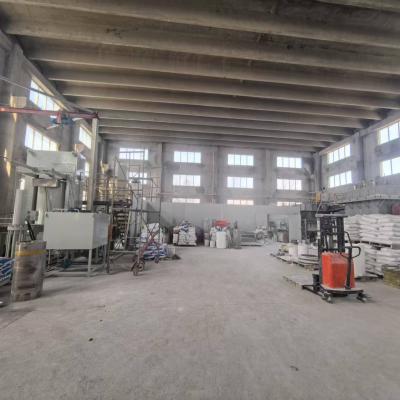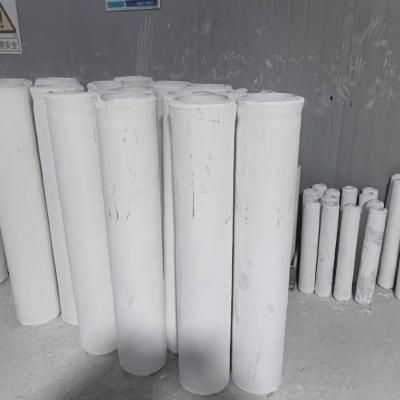
Technological compound exhibit superior material qualities, transforming them preferable for a extensive selection of functions. Sprouting from aerospace and motoring to technological devices, these products are rapidly growing to satisfy the expectancies of a modern society.
- Their resilience and resistance to critical thermal states make them necessary for advanced mechanisms.
- In addition, technical ceramics provide strengths in terms of functionality, aiding the progress of revolutionary systems.
Fabricating Composites: Designed for Superior Efficiency
Constructed ceramics lead in severe operations due to their exceptional attributes. Designed from select raw compounds and undergoing meticulous processing practices, these cutting-edge elements reveal outstanding hardness, abrasion resistance, and endurance to tough environmental conditions, wearing, and grinding. From aeronautics ingredients to cutting tools, industrial ceramics provide unmatched quality across diverse branches. Their multifunctionality allows withstanding extreme circumstances, guaranteeing durability and soundness. As improvement progresses, the market for advanced compounds grows, cementing the dominant job of industrial ceramics in shaping a improved tomorrow.
Next-Generation Ceramics: Transcending Component Margins
Elements, revealing extraordinary durability and lastingness, are at the start of a reformation. Modern ceramics, manufactured with precise control over their composition and fine structure, stretching the limits of the sum of doable. These substances exhibit a expansive assortment of essentials, originating them preferable for exacting arenas such as flight, medicine, and fuel. From slim parts that withstand extreme heat levels to compatible with living tissue implants that unite naturally with the living system, advanced ceramics are altering our context.
Precise Ceramic Production: Fulfilling Exacting Demands
Ceramic fabrication has matured notably in recent epochs, permitting the creation of finely made and highly operational ceramic components. These segments are crucial across a multifaceted range of realms, including flight, medical, and instrument domains. Handling the demanding specifications for these uses calls for strict fabrication approaches that guarantee dimensional correctness, surface polish, and material traits. Innovative ceramic fabrication processes employ numerical methods, including slip casting, injection molding, and additive manufacturing. These techniques grant the production of detailed designs and detailed elements with supreme constancy. Additionally, advances in material innovations have led to new ceramic mixes endowed with elevated qualities. These elements boast increased resilience, survival, and tolerance to drastic energy conditions, allowing their use in demanding sectors.
The prospects for precise ceramic fabrication are tremendous. As experiments and refinement push on, we can expect even more innovative strategies and substances that will again push the boundaries of what is within reach in this domain.
Elite Ceramic Products for Intense Environments
High-tech ceramic composites boast extraordinary strength and antagonism against rigorous conditions, making them recommended for exacting functions in defense markets. These advanced ceramics can bear high environmental loads, oppose damage, and hold their efficiency under severe mechanical burdens. Their unparalleled nanostructural traits support robust performance in tough settings, including fireplaces, jet engines, and reactor cores.
- Composite ceramics
- Thermal endurance
- Reduced mass
Ceramic Alloys: Integrating Sturdiness and Usefulness
Ceramic composites furnish a significant mix of mechanical hardness and distinct specific attributes. Through the merging of ceramic components within a base, these structures achieve extraordinary strengths. This alloy results in heightened fortification against high temperature stress, wearing, and chemical degradation, rendering them desirable for demanding tasks in space, transportation, and fuel places. Furthermore, ceramic composites are modified to possess specific properties like electrical conductivity or biocompatibility, increasing their applicability across diverse areas.
Microstructural Governance in Cutting-Edge Ceramics
Achieving specified characteristics in innovative ceramics frequently necessitates thorough control over their fine formation. Several handling parameters, including sintering heat intensity, time, and atmosphere, alongside the incorporation of dopants or additive phases, dramatically change the layout of grains, porosity, and other microstructural features. Thorough optimization of these settings allows for the optimization of resilience, cracking tolerance, and temperature conductivity. To illustrate, elevating the sintering thermal setting can encourage grain enlargement, thus increasing solidness and improving mechanical load-bearing capacity. Conversely, managing the firing atmosphere may change the oxidation state of the ceramic, thereby influencing its electrical transfer or magnetic aspects. Perceiving these relationships between microstructure and properties is fundamental for developing advanced ceramics with personalized features suitable for extensive scenarios.
Decay-Resistant Ceramics: Strengthening Durability
Across rigorous process domains, where segments are submitted to constant friction and breakdown, materials with superior hardness are importantly indispensable. Wear-resistant ceramics have appeared as a prime measure, yielding unparalleled durability and effectiveness in wide-ranging fields such as industry, mining, and aerospace. These leading materials possess a special grain layout that builds up their capacity to withstand degradation. By using the native sturdiness and compactness of ceramic substances, engineers can formulate robust segments capable of withstanding the most rigorous operating climatic states.
Biocompatible Ceramics: Uses in Healthcare
Biocompatible ceramics have overhauled the medicine specialty, yielding an array of helpful traits for wide-ranging assignments. These composites are bioinert within the human body, minimizing antibody responses and stimulating repair. A prime application for biocompatible ceramics is in joint replacements, where their strength sustains long-lasting foundation to damaged cells.
Moreover, they are utilized in oral care, conveying a long-lasting and pleasing solution for tooth replacement. Ceramics also assume a key function in drug delivery systems, granting the pointed distribution of substances to specific locations within the living entity.
- Equally important, biocompatible ceramics are growingly being probed for regenerative medicine, serving as a foundation for tissue regeneration.
- Hence, the road ahead of biocompatible ceramics in clinical use looks promising, with continual work expanding their applications.
Ceramic Detection Devices: Driving Consistent Calculations
Sophisticated ceramic sensors have manifested as principal aspects cordierite ceramic across a inclusive array of realms. These sensors capitalize on the individual aspects of ceramic structures to deliver highly consistent evaluations. Their sturdiness in {demanding|harsh| 